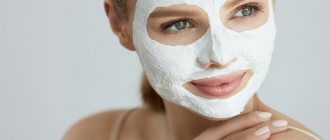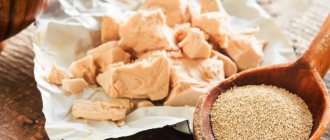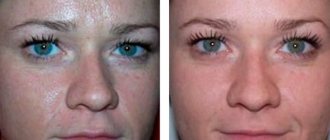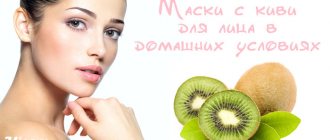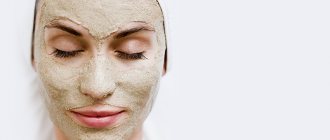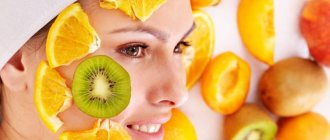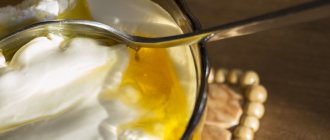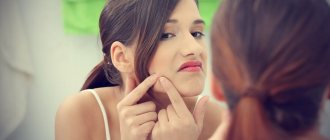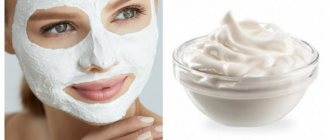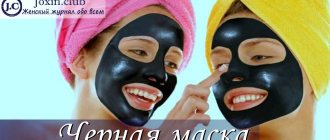Yeast can be used not only in making delicious pastries and bread, but also for cosmetic purposes. Yeast contains quite a lot of nutrients and vitamins and therefore is included in the yeast face mask for acne. The product helps not only get rid of acne, but also supply the skin with the necessary vitamins to smooth, tone and promote cell renewal. Thus, using a mask with added yeast will be useful for other problems.
The benefits of yeast masks
To use yeast correctly, you need to understand why this product is useful.
First of all, you need to understand that it is recommended to use pressed types for cosmetics. Brewer's yeast is also suitable; it can be used as masks and consumed internally. In this case, the efficiency will be increased several times.
Dry yeast is not entirely suitable for use in cosmetics. They do not contain as many nutrients as pressed ones, but if it is not possible to purchase pressed or beer ones, you can also use dry material.
Action of yeast:
- Vitamin B2 helps the skin become more renewed and restore damaged cells.
- Vitamin B1 helps give increased tone, good elasticity and energy.
- Vitamin B3 helps improve the functioning of the sebaceous glands, and epidermal cells recover faster.
- Vitamin B5 gives the skin the ability to resist stress and environmental influences.
- Folic acid slightly dries out the skin and pimples, helping to fight acne in the earliest stages. Regular use will completely cleanse your face and prevent acne from spreading.
- Amino acids help smooth the skin and get rid of fine wrinkles.
- Vitamin E makes the facial contour more nourishing and improves blood circulation in the skin.
- Vitamin H prevents skin flaking and properly moisturizes it.
Tips from cosmetologists
Experts have nothing against such a wonderful remedy as yeast. Moreover, they unanimously confirm its effectiveness at home. Yes, there are a lot of modern remedies that can solve the same problems as yeast masks, in a much more convenient and less labor-intensive way. There are a lot of cosmetic procedures designed to cleanse and nourish the skin with useful substances. But if you like making natural masks, then why not.
However, cosmetologists emphasize that before solving a problem with facial skin using a yeast mask, you should find out the cause of this problem. First of all, the condition of the face is a mirror of our everyday life . And first of all, if you have skin problems, you need to look at your diet, activity and sleep patterns. A healthy lifestyle solves most of the problems, not masks.
In addition, if you want to enhance the effect of masks, it makes sense not just to smear yeast on your face, but to take a course of dietary supplements based on brewer’s yeast. Of course, if there are no contraindications to this. This will increase the overall resistance of the body, improve the quality of skin, nails, hair and your well-being. Still, yeast is a really useful product that solves many problems in the body, not just facial skin problems.
And the last recommendation is regularity of procedures. The main disadvantage of natural masks is that they only work as long as you do them regularly. There is only one advantage of the yeast mask - it can be applied to the face at least every day, at least every other day, at least twice a week. It does not have a cumulative effect and is completely safe, but at the same time, its effect will last for 3-4 days, if you do not forget to repeat the procedure.
How to prepare yeast
Before use, it is necessary to properly prepare the product so that all nutrients become more accessible to the skin:
- Beer types of the product are immediately used for their intended purpose; they do not require preliminary preparation.
- The dry consistency must be soaked in water and wait about 20 minutes.
- The pressed briquette is broken into small pieces and thoroughly dissolved in warm water. To release useful substances, the mass is left for 1-1.5 hours. Preferably in a warm place.
Usually the product has no contraindications, but it is worth considering that allergic reactions and individual intolerance are possible. Before use, be sure to apply the mixture to the inside of your wrist and leave for 30 minutes. If irritation does not appear on the skin, then the product can be used on the face.
In addition to prepping the product, you also need to prep the skin. Proper preparation will help make the mass more effective, and its effect will be improved several times.
Before use, your facial skin must be properly cleansed; simply washing your face may not be enough. For better cleansing, you need to steam the skin. It is enough to hold your face over the steam of medicinal herbs.
A specific skin type needs to be steamed with infusions of various herbs:
- Chamomile, rose petals, linden, yarrow and sage are suitable for dry skin.
- But for oily skin, we can recommend coltsfoot, string or oak bark.
- To solve acne problems, you can hold your face over the steam of infusions of celandine, aloe, chamomile, calendula or birch buds.
It is enough to steam the skin for only 15 minutes and then start applying the nourishing product.
Rules for preparing and applying masks
Women who like to prepare a wide variety of masks at home are probably already familiar with the basic rules for their preparation, but we will still remind you of the most important ones, and also reveal a few secrets that will help achieve better results in the shortest possible time:
- Prepare the mask immediately before applying it in a porcelain or glass container. Remember: if the mask is left on for more than 10 minutes, many of its beneficial properties disappear. You should also not mix ingredients in plastic or iron containers.
- Buy only fresh yeast. Do not use their dry model under any circumstances.
- Before applying the composition to your face, check it for allergenicity. To do this, apply a small amount to the thin skin of your wrist and observe the reaction.
- In the meantime, steam your face so that the pores open as much as possible and all the beneficial components are absorbed into the skin. For problem skin, you can prepare a herbal decoction and breathe over it for several minutes (the so-called steam bath). It is best to prepare a decoction of calendula, chamomile, string or nettle. These herbs have anti-inflammatory properties, so they will be a good addition to a yeast mask.
- Apply the mixture to slightly damp facial skin with massage movements. While the composition is active, we recommend that you relax your facial muscles as much as possible; it is best to lie down and not talk to anyone at this time.
- Rinse off the mask with cool water, preferably clean, and not from the tap. To consolidate the result, you can “close” the saturated pores with pre-prepared ice cubes. You can also freeze decoctions of the above herbs, or green tea, or pure water (mineral water also has good properties).
- Make yeast masks 2-3 times a week. It is best in the evening, but no later than an hour before bedtime. If you carry out the procedure during the day, then it is advisable to sit at home for at least 2 hours afterward.
- And lastly: after the mask, be sure to apply a light moisturizer to your facial skin!
Mask recipes
The product may contain various additional ingredients; they will help the mass act more effectively.
With hydrogen peroxide
To prepare this mass, you need to mix 1.5 tablespoons of the main product with 3% hydrogen peroxide . The mass should be thick . The mass is applied to the face, massaged a little and washed off after 10 minutes. This product is recommended for use on acne and, if necessary, to whiten the skin.
With sour cream and lemon juice
Mix sour cream with yeast until thick and add a spoonful of lemon juice. Lemon juice must be squeezed out immediately before use.
To supplement, you can add chicken egg white to the mixture.
The mass is applied to the face, wait until it dries completely and wash off with warm water. After this, you can apply a nourishing cream.
With milk and honey
Yeast is dissolved in heated milk to the consistency of thick sour cream. The mass is left in a warm place to begin fermentation, after which half a spoonful of liquid honey is added and mixed well. The mass is applied to the face for about 15 minutes and washed off with water.
With clay
This mask helps to cleanse the skin especially thoroughly , open all pores, clean them and smooth out traces of damage. You can use any clay, but it is recommended to choose the types that are more suitable for your specific skin type.
Contraindications
Despite all the benefits of proteins and vitamin B, positive reviews and quick results, yeast face masks still have their contraindications :
- Do not apply to damaged skin (burnt or after laser resurfacing);
- It is not recommended to use for fungal or infectious diseases of the dermis (lichen, herpes, etc.);
- if the mass burns the skin, and after it rashes and redness appear - this is a sure sign of an allergy, immediately stop using it, rinse the affected area with warm milk or chamomile decoction.
The benefits that a yeast face mask brings to the skin are undeniable. What effect you get depends only on how often this product is used. Any of the above masks will be suitable for both hair and body, just increase the proportions a little. Folk cosmetics help solve many problems without the use of expensive products and scalpels, the main thing is to use it correctly.
Reviews
A yeast mask for the face, reviews of which on the Internet are mostly positive, helps perfectly in the fight against acne, the skin becomes clearer, I use it once a week.
Tatiana
These masks were recommended, but not for problem skin, but to give the face freshness and a healthy color. Masks with the addition of white clay have a very good effect.
Karina
The masks are simple and do not have a high cost, all the ingredients are natural, these are natural cosmetics, and not what they sell in stores.
I advise everyone to find the right ingredients for themselves. Galina Vitalievna
Beneficial properties of yeast for the face
Much of what is needed to restore facial skin is contained in yeast. Manufacturers of cosmetics took advantage of this - ready-made yeast masks can be purchased in almost any store. But women know how to save money and have figured out that homemade masks are no different from “factory-made” ones. The main thing is to choose high-quality yeast.
It is known that yeast is a natural fungal culture, the chemical composition of which is impressive! It’s impossible to count all the benefits, but we will highlight exactly those components of yeast that help maintain youthful skin and provide it with a healthy appearance.
- A wide variety of vitamins that are mainly involved in metabolic processes (B vitamins, vitamins PP, E, D, C and others).
- Amino acids and antioxidants (responsible for the synthesis of collagen and elastin).
- Folic and pantothenic acids (have anti-inflammatory properties).
- Minerals: zinc, iron, iodine, sodium, calcium, potassium, magnesium (slightly dry out acne and enhance the protective functions of the skin, restoring its elasticity and freshness).
- Niacin (helps improve complexion).
Indications for use
Brewer's yeast should only be used as directed.
It contains the following indications:
- lack of zinc and vitamin B;
- for comedones, pimples, acne with varying degrees of severity;
- in the presence of brittle hair and nail plates;
- if there is a dull coloring of the facial skin;
- presence of scars and acne marks.
Also, preparations with brewer's yeast are often prescribed for the following conditions:
- when anemia occurs;
- during diabetes mellitus;
- sensation of skin itching;
- furunculosis;
- for dermatitis of various origins.
Options for using yeast-based formulations
For masks to be as effective as possible, they must be used on previously cleansed, or better yet, steamed skin. She must be completely relaxed, that is, lie down during the action of the mixture and not talk. The working time of yeast compositions is 15 minutes. After them, creams are applied to the face. So, try the action of these yeast compositions:
- Treatment of acne in adolescents. Prepare 20 grams of the main product, dilute it until thick with agave juice and add a pinch of soda. Apply a thick layer of this mixture to your face. The composition should be used daily, it is better to wash it off with chamomile infusion.
- Anti-inflammatory mask. It treats teenage acne and mature skin irritations. To prepare the composition, you need to take 20 grams of the main product, 3 capsules of vitamin E, 4 drops of tea tree oil and dilute everything with Kalanchoe juice until thick.
- Brightening mask. Prepare 30 grams of the main product, dilute it with fresh cucumber juice, add a few drops of hydrogen peroxide.
- Nourishing composition for normal skin. To 30 grams of yeast, add the yolk, a tablespoon of lemon juice, and a pinch of cinnamon. Apply a homogeneous mixture in a thick layer to your face.
- Mattifying composition for oily skin. To 30 grams of the main product, add 1 tablespoon of oatmeal, 3-4 tablespoons of whey, 2 drops of rosemary essential oil.
- Composition for oily skin. Beat one egg white, mix with 20 grams of yeast and a teaspoon of lemon juice.
- Revitalizing mask for normal skin. Take 20 grams of the main product, grind a handful of black currants into puree and combine with yeast, add 3 capsules of vitamin E. Apply a thick layer of the composition to the skin.
- Lightening composition. Dilute thirty grams of the main product with hydrogen peroxide until thick and add a handful of fresh chopped parsley. After stirring, use on face to remove pigmentation.
- Nourishing composition for dry skin. Combine two tablespoons of yeast with one spoon of olive oil and orange juice until thick.
- Nourishing mask for sagging skin. To 20 grams of yeast, add 2 tablespoons of heated honey and one ampoule of vitamin B12, 3 drops of grapefruit essential oil.
- Drying composition for problem skin. Take equal proportions of the main product and black clay, dilute them with serum to a thick sour cream, apply to the skin.
So, there are many options for combining yeast with other components for skin care and treatment. Choose yours - and look good!
